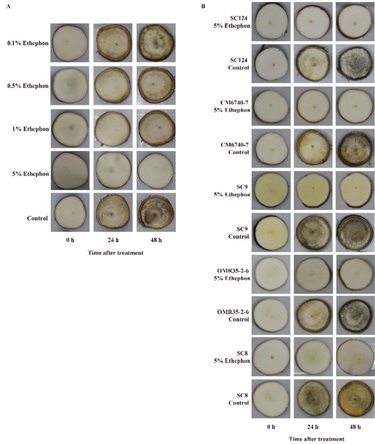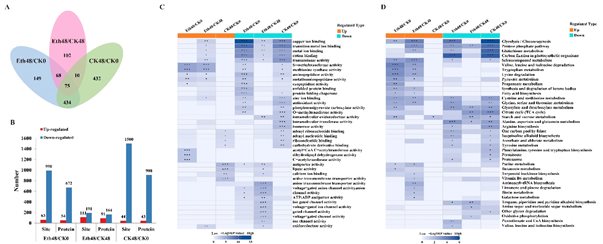Recently, the functional genomics and molecular breeding research team at the Institute of Tropical Bioscience and Biotechnology/Key Laboratory of Biology and Genetic Resources of Tropical Crops, Chinese Academy of Tropical Agricultural Sciences, conducted the first global acetylation profile in cassava using quantitative acetylproteomes. They revealed the regulatory pathway through which ethephon delays postharvest physiological deterioration (PPD) in cassava via acetylation modifications. These findings open new avenues for understanding the molecular mechanisms of ethephon's regulation of PPD in cassava.
Cassava (Manihot esculenta Crantz) is the world's sixth-largest food crop and an important economic crop in tropical and subtropical regions of China. PPD is a unique physiological phenomenon of cassava that occurs in the storage roots within 48 h after harvest, leading to preservation challenges and acting as a bottleneck in the development of the cassava industry. This study first discovered that exogenous ethephon treatment of cassava storage roots can effectively activate the reactive oxygen species (ROS) scavenging system and inhibit polyphenol oxidase activity, thereby delaying PPD (Figure 1-2). Further analysis using label-free quantitative acetylation proteomics identified 12,095 acetylation sites on 4,403 proteins, with 1,270 proteins showing significant acetylation changes during PPD process (Figure 3). These acetylated proteins are mainly involved in regulating the ROS scavenging system, pentose phosphate pathway, tricarboxylic acid cycle (TCA cycle), and glycolysis/gluconeogenesis, indicating that a substantial amount of energy is required to activate the ROS scavenging system and regulate other metabolic pathways after ethephon treatment, thereby achieving the goal of delaying PPD (Figure 4). Collectively, this study provides a preliminary analysis of the mechanism by which ethephon, as a protective agent, effectively delays cassava PPD from the perspective of quantitative acetylproteomes. It also presents a potential avenue for extending the shelf life of cassava storage roots.

Figure 1. Effect of exogenous ethephon on the alleviation of PPD

Figure 2. Effect of exogenous ethephon on the ROS scavenging system and PPO activity during the PPD process

Figure 3. A global map of DAPs (P < 0.05, fold change >1.5 or < 0.67) during the PPD process in cassava storage roots

Figure 4. Functional classification and enrichment of the differentially acetylated proteins in the Eth48/CK48 group
The findings were published in Food Chemistry with the title “The regulation mechanism of ethephon-mediated delaying of postharvest physiological deterioration in cassava storage roots based on quantitative acetylproteomes analysis”. Associate Researcher Yan Yan and Researcher Meiying Li from the Institute of Tropical Bioscience and Biotechnology of Chinese Academy of Tropical Agricultural Sciences are the co-first authors of the paper, and Researcher Wei Hu from the Institute of Tropical Bioscience and Biotechnology/Key Laboratory of Tropical Crop Bio-breeding/Coconut Research Institute of Chinese Academy of Tropical Agricultural Sciences is the corresponding author. This study was supported by the Key Research and Development Program of Hainan Province, the Project of Sanya Yazhou Bay Science and Technology City, the National Natural Science Foundation of China, and the Central Public-interest Scientifc Institution Basal Research Fund for Chinese Academy of Tropical Agricultural Science.


